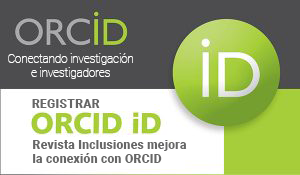OSTEOPENIC SYNDROME IN CHILDHOOD AS PART OF A TRAUMATOLOGIST - ORTHOPEDIST PRACTICE IN POLYCLINIC
Palabras clave:
Osteopenic syndrome, Osteoporosis, Connective tissue, Bone structure densityResumen
The authors of the article noted a trend associated with bone tissue physiological remodeling violation in a certain group of children during their scientific and practical activities. These are patients with a previously diagnosed hereditary connective tissue disorder. Monitoring of patients with osteopenic syndrome against the connective tissue developmenthereditary disorders background was organized. The authors have developed some algorithms and approaches to improve treatment and rehabilitation, preventive measures in children with this condition. The research process was based on the observations of 30 patients with osteopenic syndrome against the background of connective tissue development hereditary disorders. The work was carried out in the period from 2015 to 2020. It should be noted that hereditary disorders of connective tissue development in childhood have the form of a systemic disease, including bone structures, which is based on incorrect, perverse development of connective tissue. All the patients we examined had a history of limbs and spine fractures. During dynamic observation, the main clinical symptoms of the pathological process were characterized by the presence of curved limbs due to multiple fractures in each patient's anamnesis, muscle hypotension, incorrect posture (scoliotic, kyphotic, kyphoscoliotic, flat back). Additional examination methods conclusions (laboratory, x-ray, stabilometric, electroneuromiographic, densitometric) confirmed the diagnosis. The treatment and rehabilitation activities carried out allowed achieving desired dynamics and improve the child's life quality. Analysis of pathological process and treatment approaches basic manifestations is necessary not only for traumatologists - orthopedists, working at children's clinics, but also, especially, for pediatricians at polyclinic districts. Early detection of connective tissue pathology, bone structure density allows minimizing a number of further, likely complications, such as osteochondropathy, kyphoscoliosis, juvenile osteochondrosis, and other manifestations.
Publicado
Cómo citar
Número
Sección
Los autores retienen los derechos de autor y otorgan a Revista Inclusiones el derecho de publicación bajo Creative Commons Attribution 4.0 International (CC BY 4.0). Esto permite el uso, distribución y reproducción en cualquier medio, siempre que se otorgue la debida atribución al autor.











